Biology Department, University of Regina (Apr 4th, 2022)
Jesse McNichol (he/him) : PhD, Biological Oceanography
Postdoctoral Scholar, University of Southern California
Winogradsky Columns, or "The World in a Tube"
(Biology 310, Microbial Diversity and Cell Function)
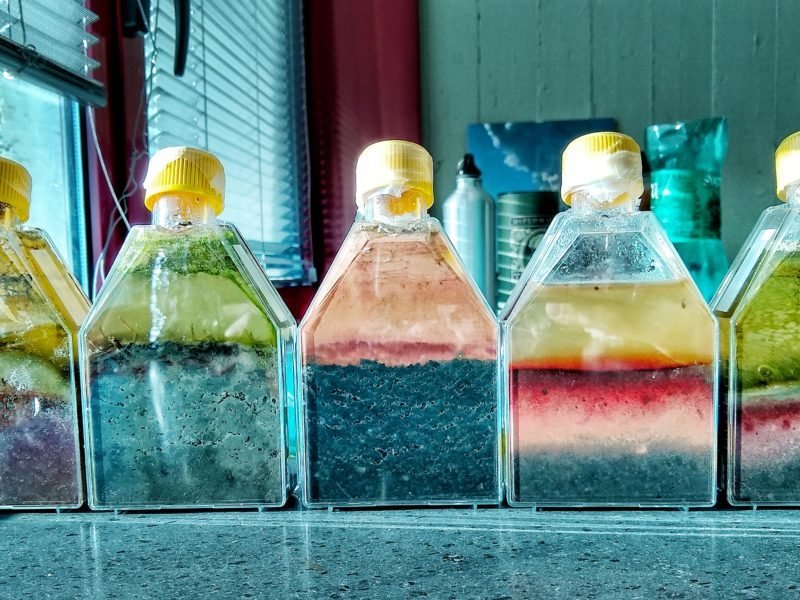
Donato Giovanelli
Roadmap
- Group discussion activity
- Biogeochemistry of oxygen and carbon
- How to make a Winogradsky Column
- Chemistry of the microcosm
- Microbial metabolisms, niches
- Global implications
- Final activity on targeted isolation
- Clicker questions / group discussions
- Worksheet activity at end of class
Roadmap
- Group discussion activity
- Biogeochemistry of oxygen and carbon
- How to make a Winogradsky Column
- Chemistry of the microcosm
- Microbial metabolisms, niches
- Global implications
- Final activity on targeted isolation
- Clicker questions / group discussions
- Worksheet activity at end of class
Discuss in pairs for 2-3 minutes:
As part of a mission, you are sealed inside a spaceship for 1 year.
- What 4 basic things do you need to survive?
- Where do these 4 things come from on Earth?
Discussion

Discuss in pairs for 2-3 minutes:
As part of a mission, you are sealed inside a spaceship for 1 year.
- What 4 basic things do you need to survive?
- Where do these 4 things come from on Earth?
Discussion

- Water
- Food
- O2 source
- CO2 sink
- Rain
- Plants
- Plants
- Plants
The carbon and oxygen cycle
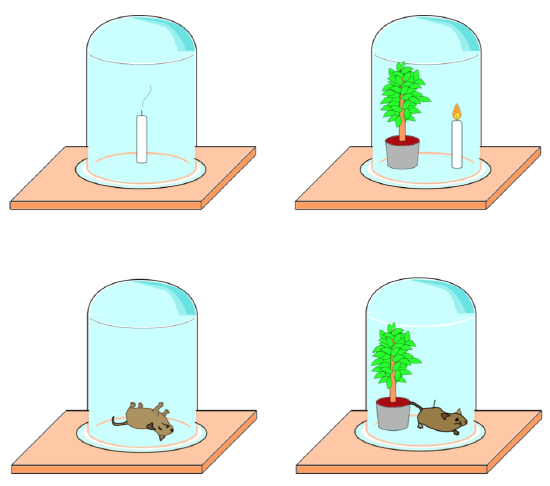
Joseph Priestly's not-very-nice-to-mice experiment (bio.libretexts.org)
Everything that the plants take from the air they give to animals, the animals return it to the air; this is the eternal circle in which life revolves but where matter only changes place.’’ —Jean Baptiste Dumas, 1842
Consume food / O2 & produce CO2
Consume CO2 & produce food / O2
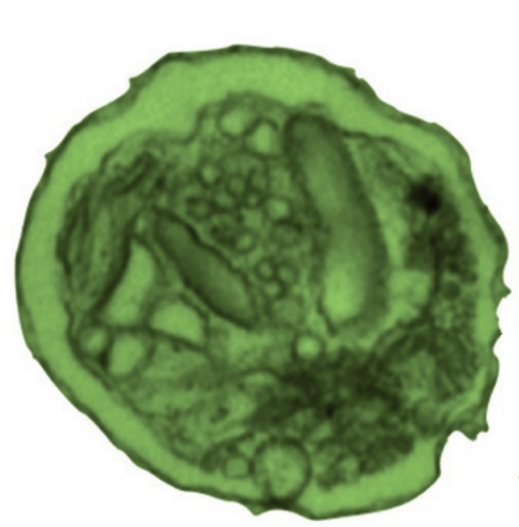
The carbon and oxygen cycle
Elemental cycles + geology + physics =
Earth Systems Science / Biogeochemistry



The carbon and oxygen cycle - Redox
Oxidize organic carbon to CO2 & reduce O2 to water
Reduce CO2 to organic matter & oxidize water to O2

Redox cycles of other elements
Falkowski, Fenchel and Delong, 2008

Interconnected redox cycles
Winogradsky columns
A microcosm of C, O, S redox cycling...
O2
H2S
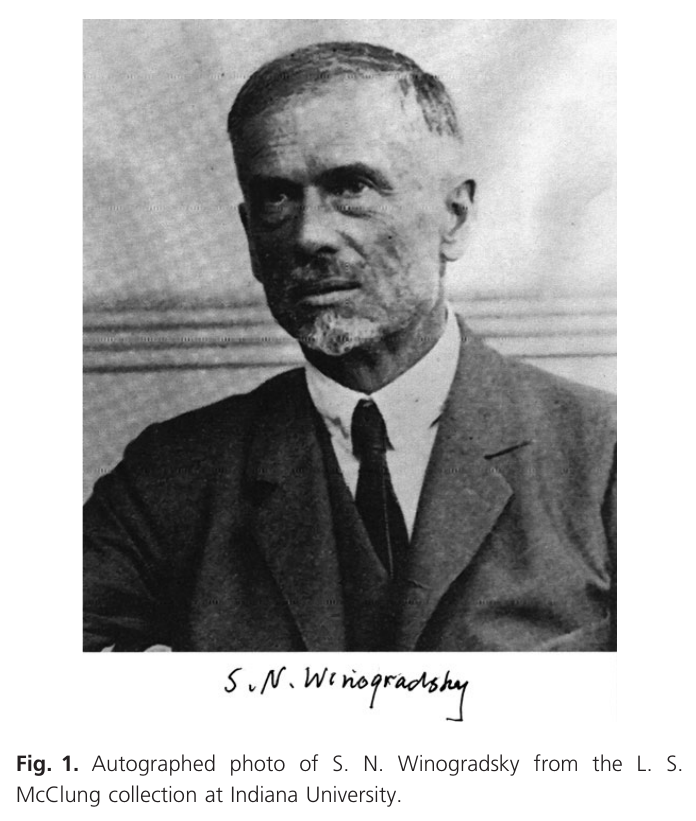
Winogradsky: the 1st Microbial Ecologist






... helps us to understand global processes
One global system

Redox cycles of other elements
Winogradsky columns: a recipe
Microbiology à la Winogradsky:
Combine in a bottle or tube:
- Organic carbon source
- Inorganic carbon source
- Sulfur source
- Water (fresh or salty)
- Mud / sediment
Mix well and incubate in the light. Combines well with research. Keeps for up to 20 years.
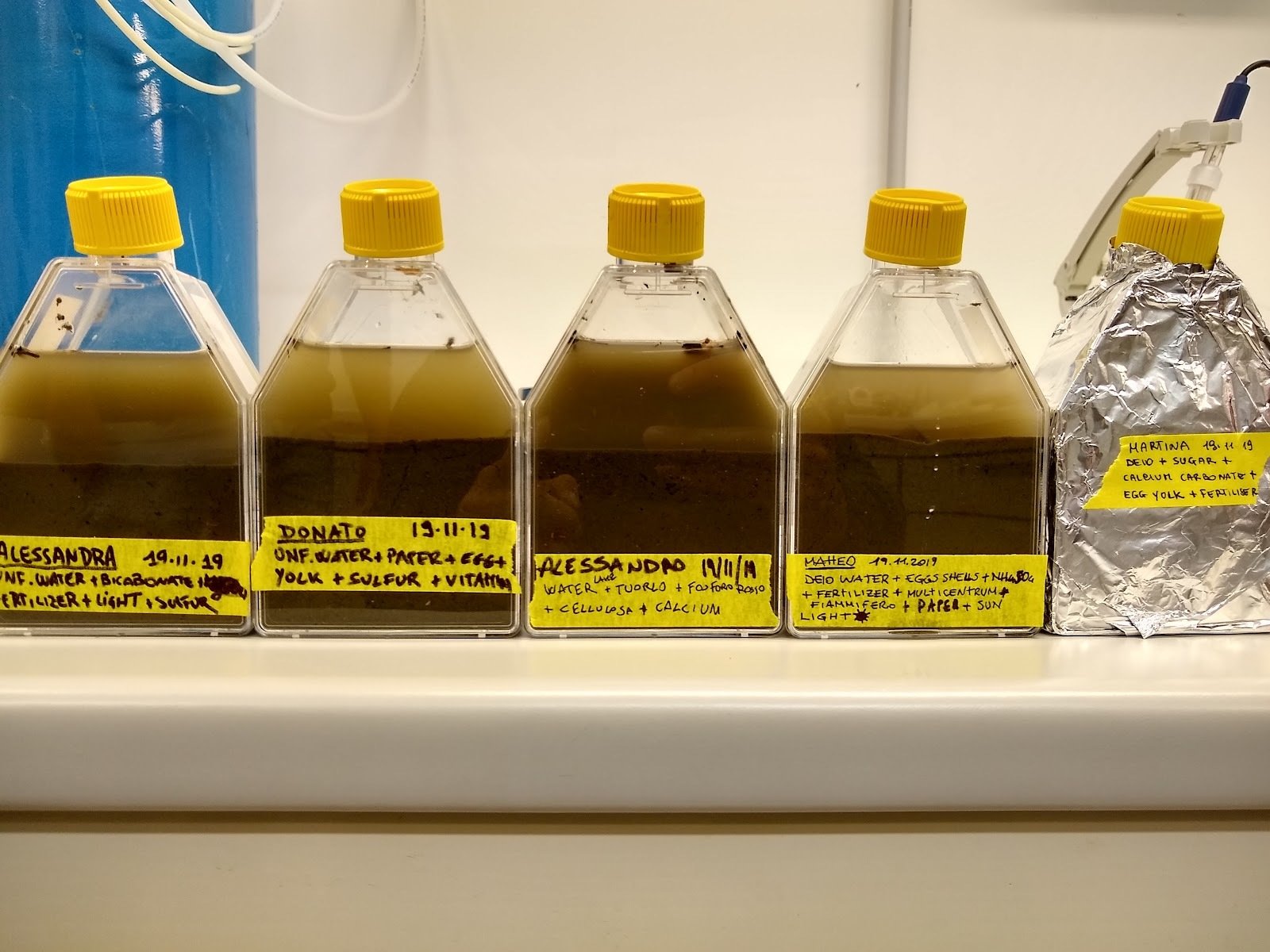

Winogradsky columns: a web of reactions

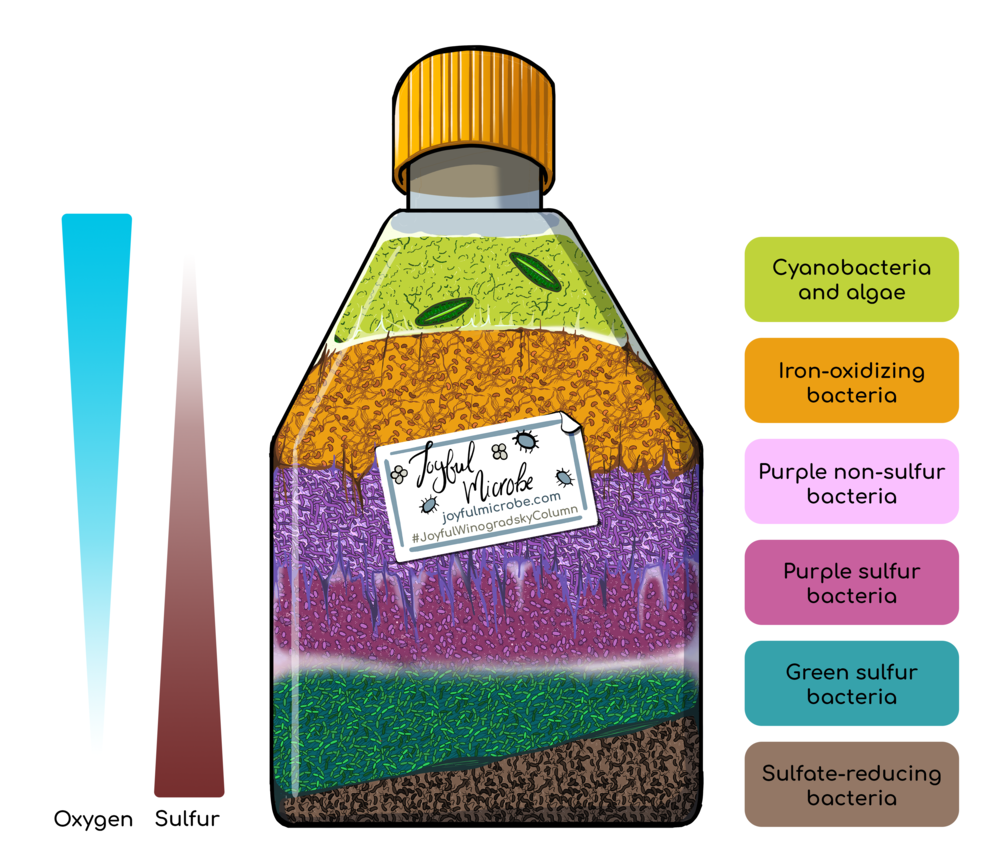


Think-pair-share (3 minutes):
- Give an example of the waste product of one organism feeding another
- What would happen if you sealed the cap and incubated in the dark?




Winogradsky columns: metabolic rationale

H2S

O2
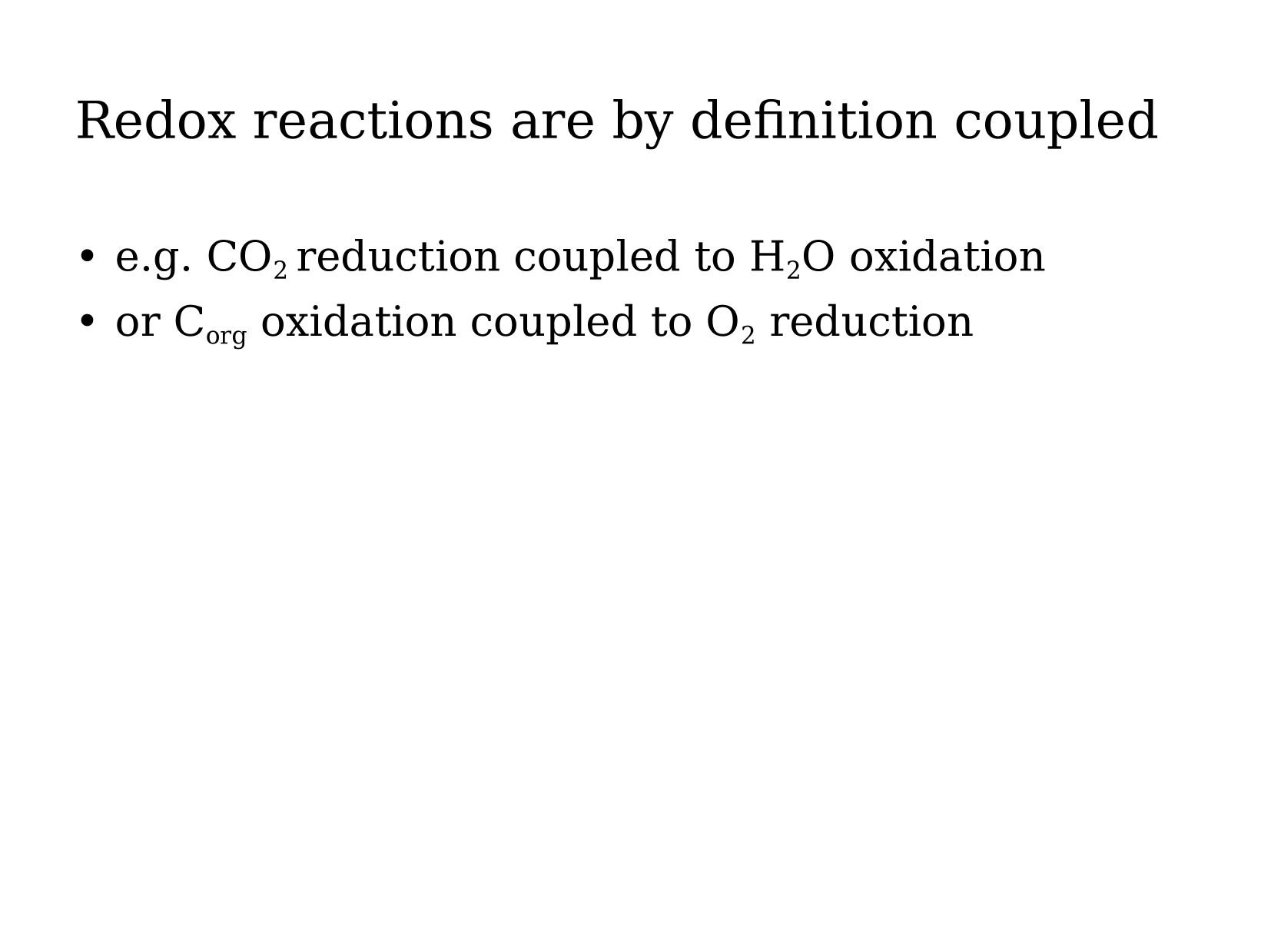
Coupling of redox reactions
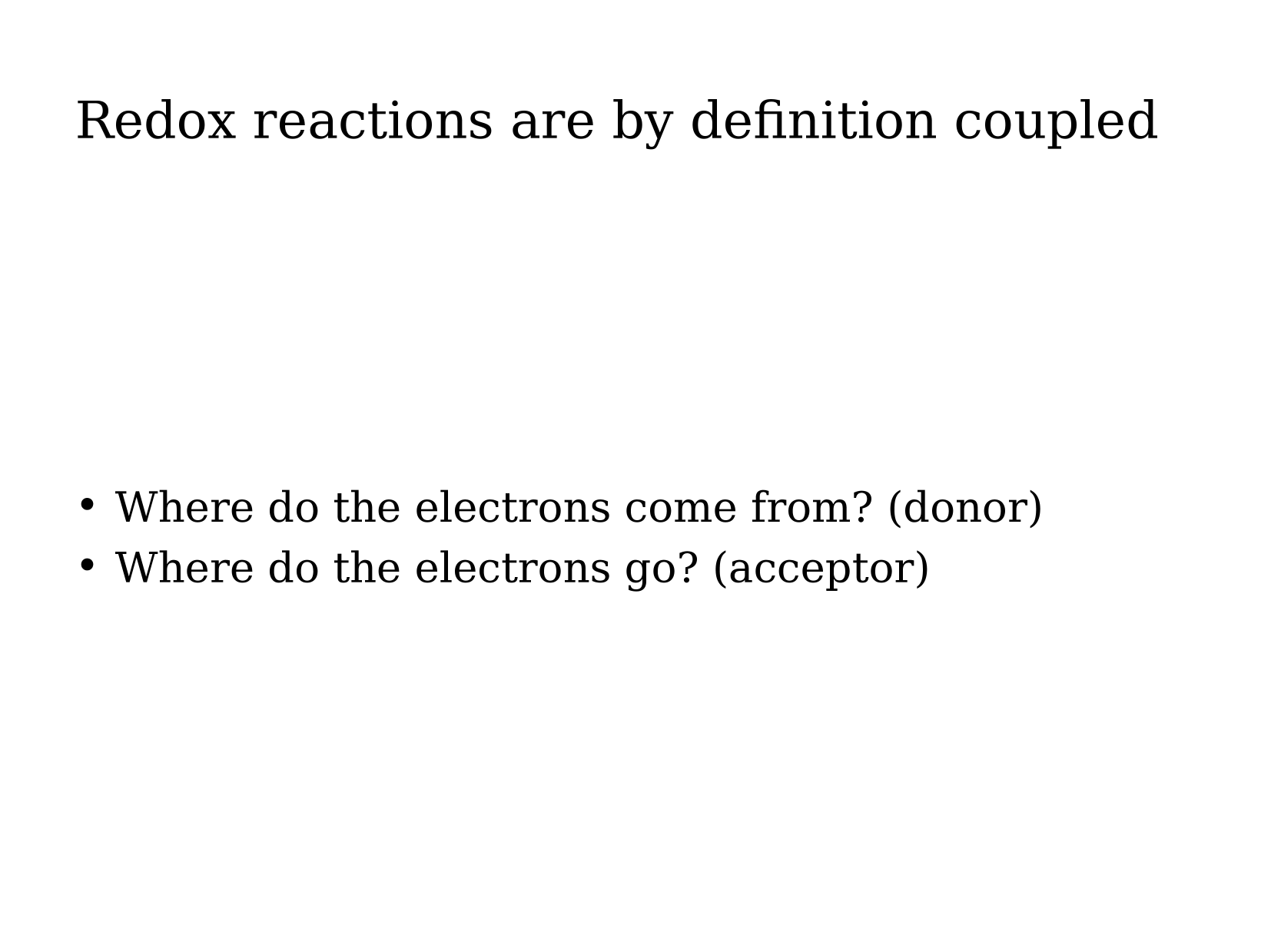
Coupling of redox reactions
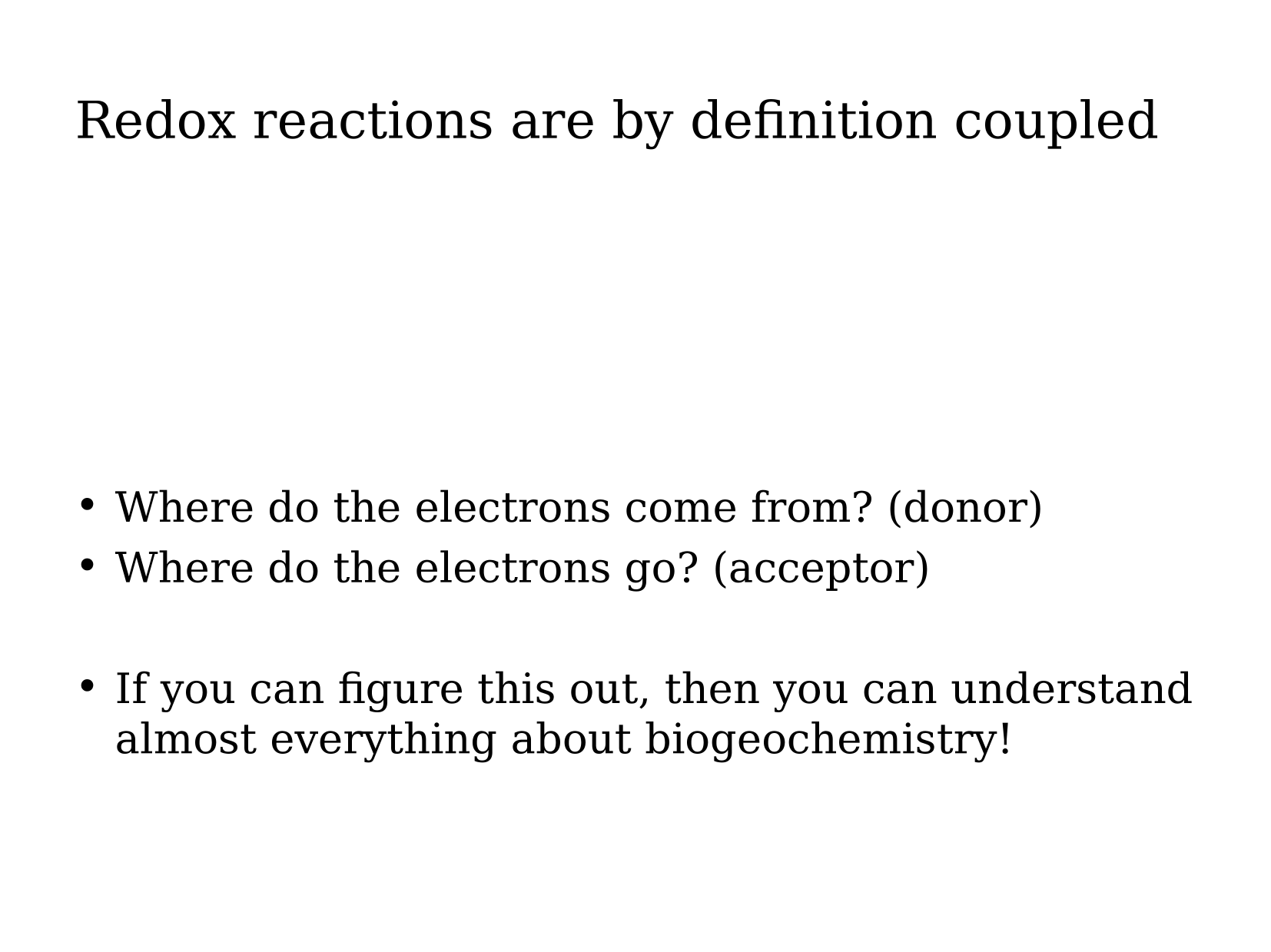
Coupling of redox reactions

Electron & proton flow during respiration
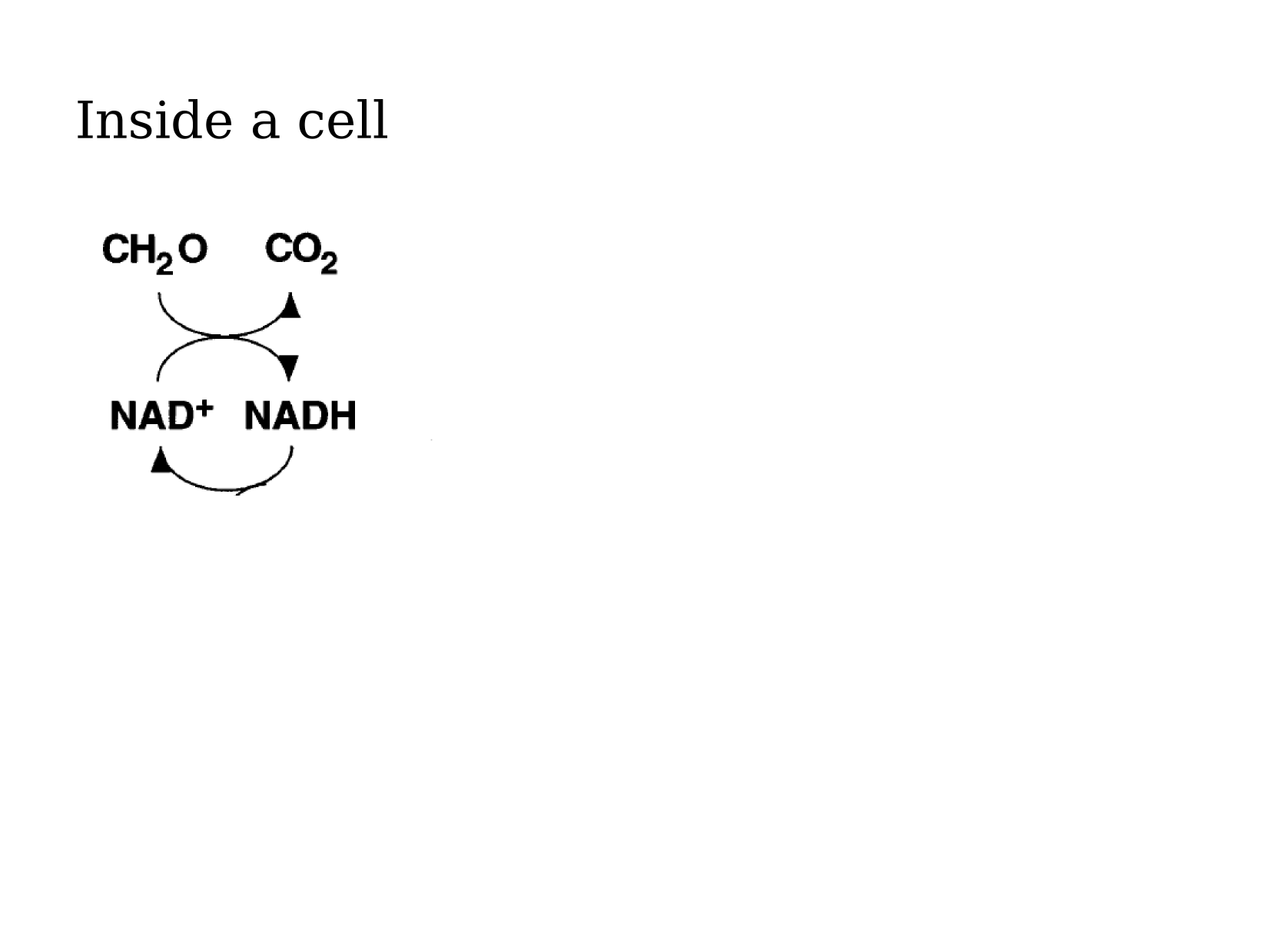
Electron & proton flow during respiration
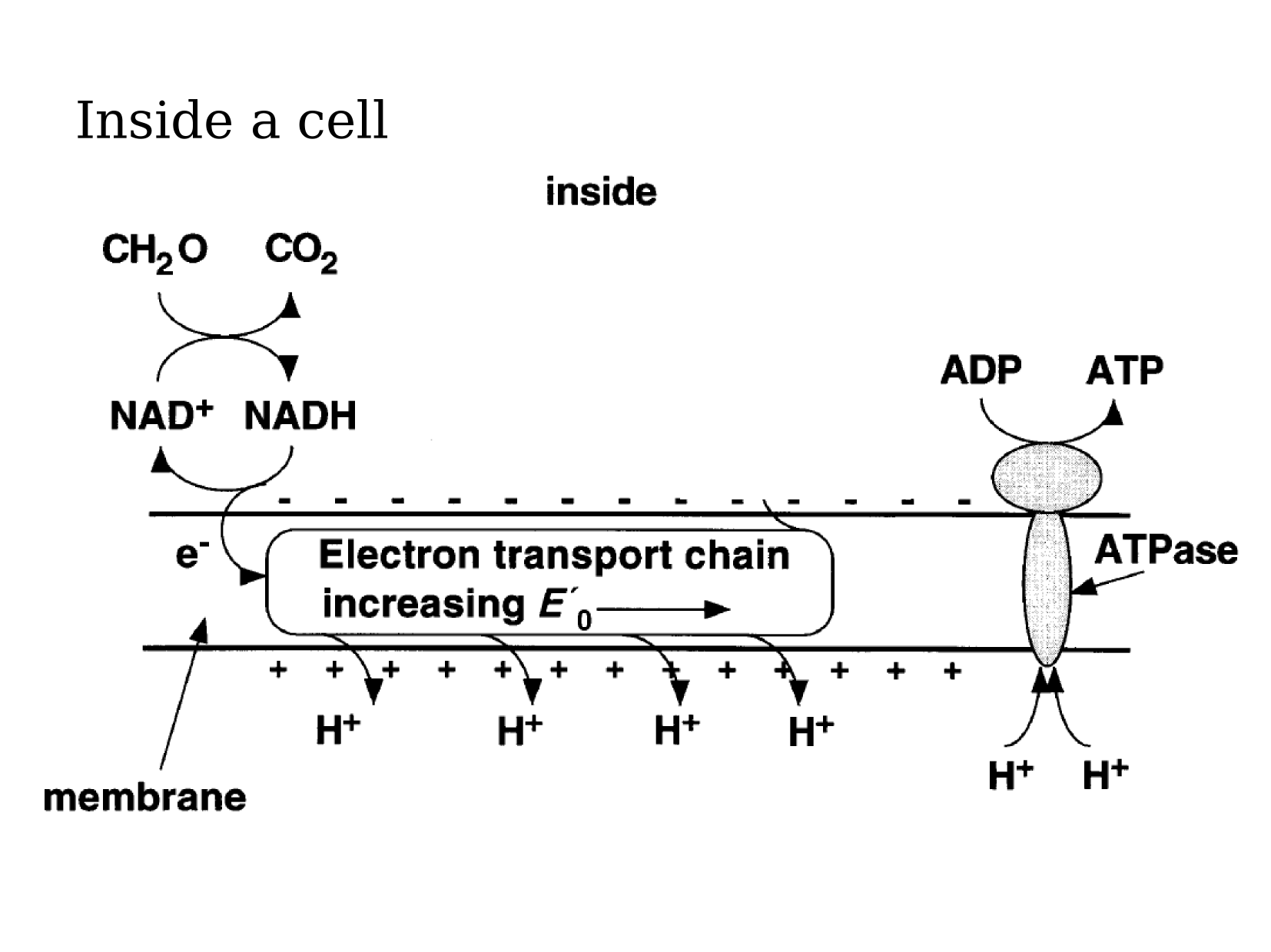
Electron & proton flow during respiration
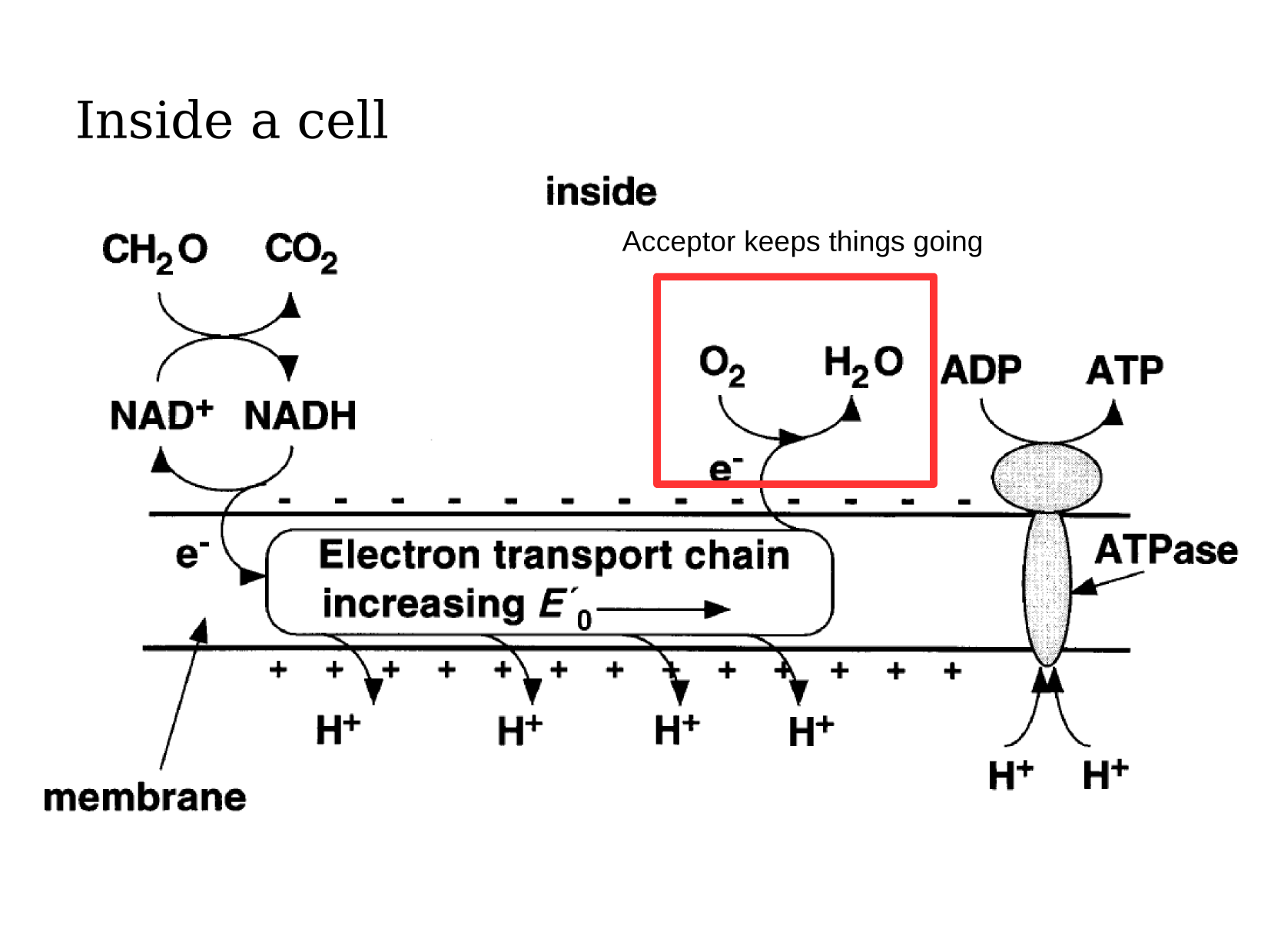
Electron & proton flow during respiration
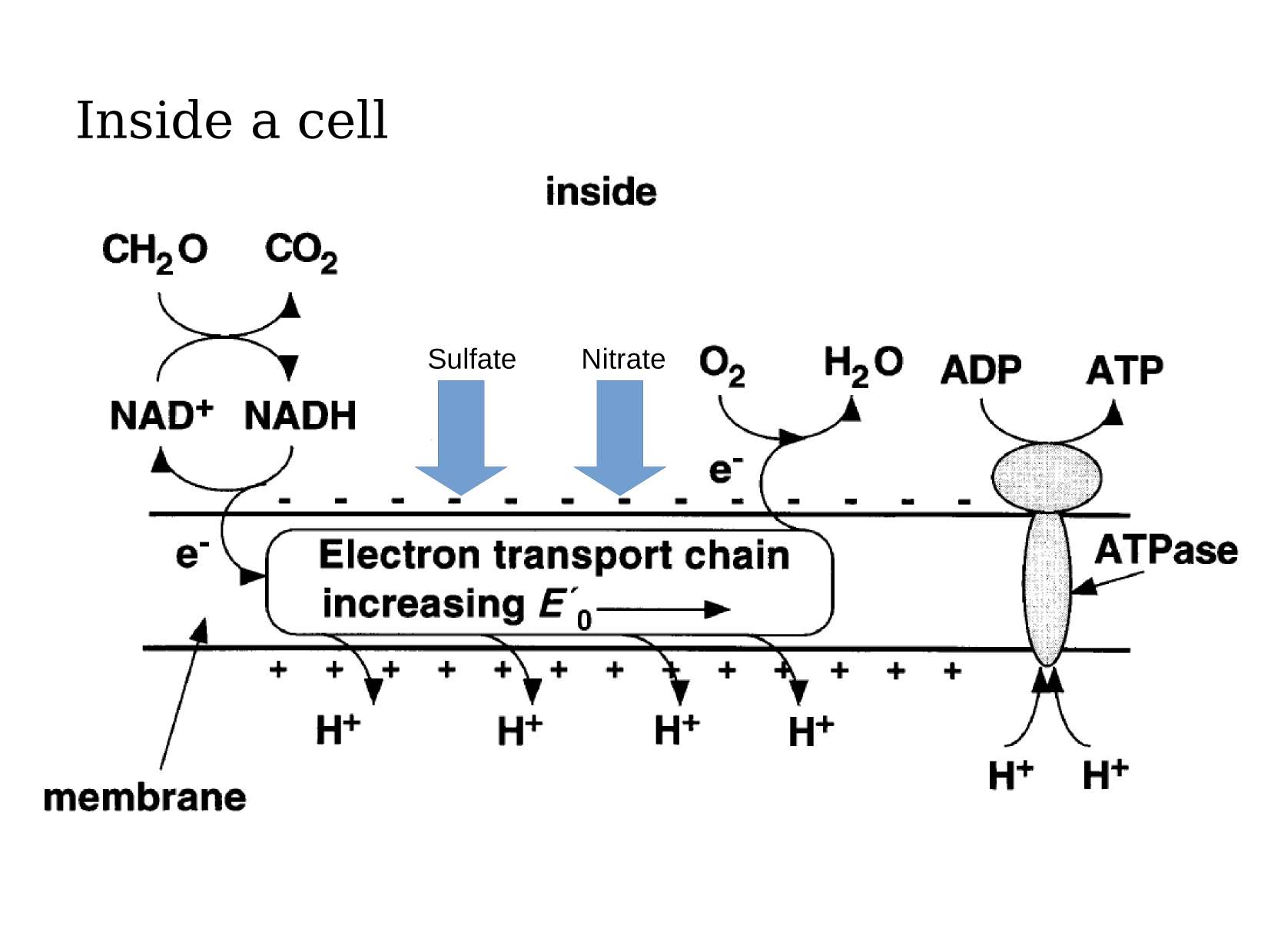
Electron & proton flow during respiration
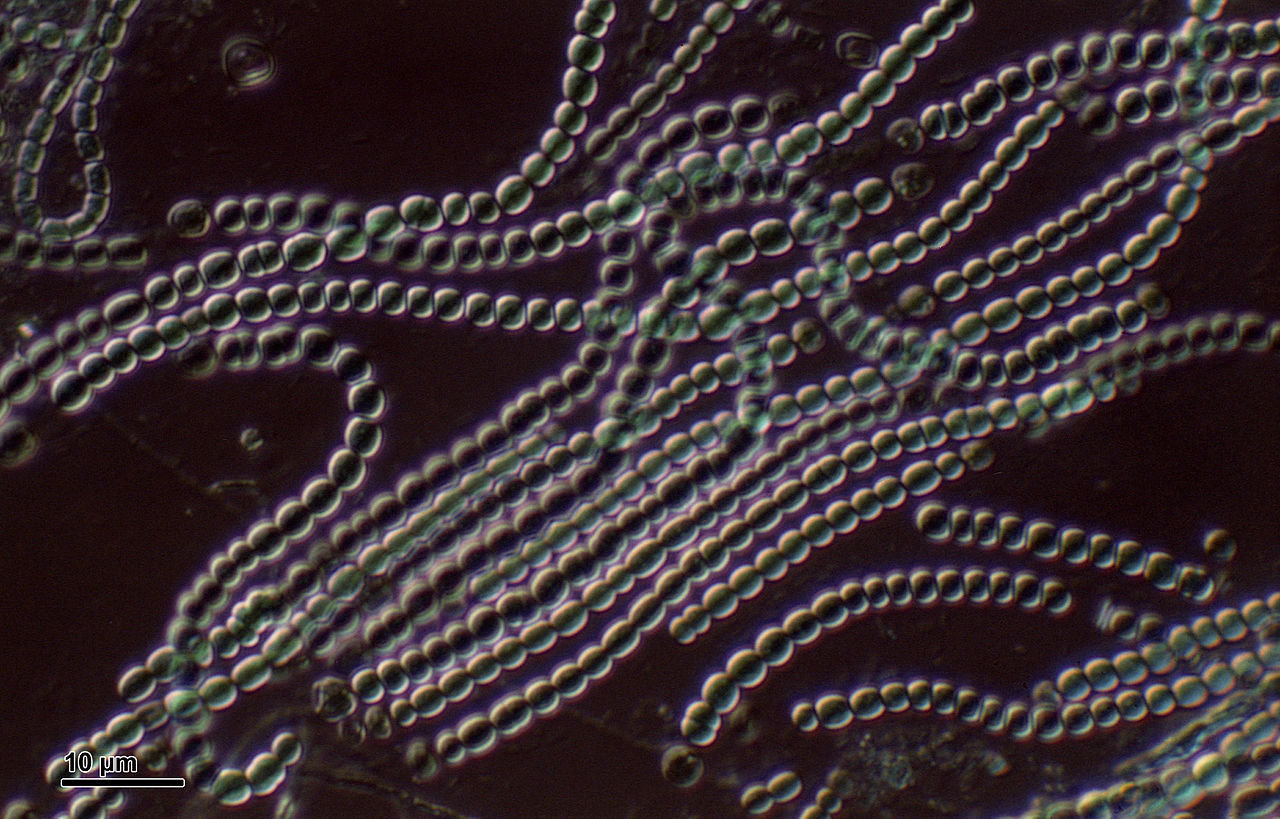

Oxygen production occurs as a byproduct of oxidizing water
O2 production in a phototroph
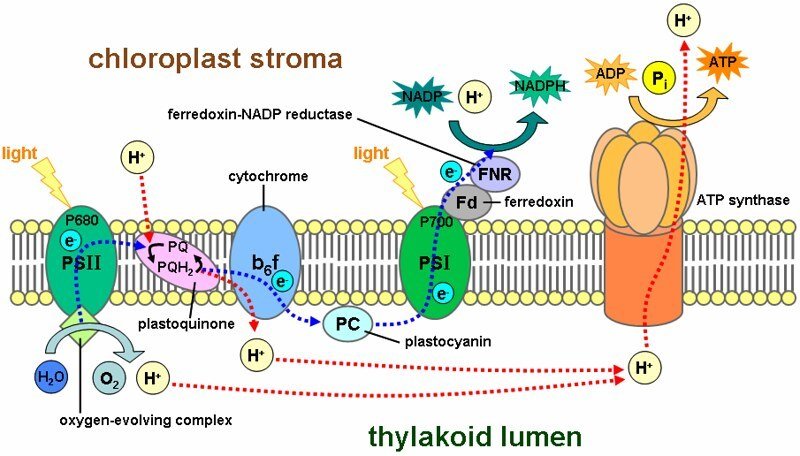
Taiz and Zeiger, Plant Physiology, 4th edition
Electron transfer in phototrophs



Do oxygenic phototrophs respire?
D) 2 & 3
E) 1 & 3
C) 2
B) 1 & 2
A) All of the above
- They do not need to respire because they produce oxygen internally and use light to produce ATP
- They might need to respire at night or when light levels are too low
- Cells of plants that are not exposed to light like roots need to respire


Do oxygenic phototrophs respire?
D) 2 & 3
E) 1 & 3
C) 2
B) 1 & 2
A) All of the above
- They do not need to respire because they produce oxygen internally and use light to produce ATP
- They might need to respire at night or when light levels are too low
- Cells of plants that are not exposed to light like roots need to respire

Do oxygenic phototrophs respire?
The carbon and oxygen cycle in a eukaryotic alga


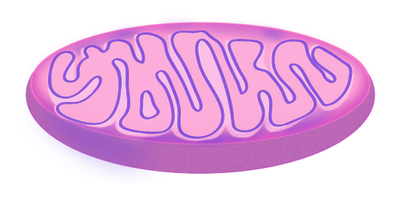
Chloroplast
Mitochondrion
The whole carbon cycle in a single cell!




Winogradsky columns: classifying metabolisms

H2S

O2
How to classify these groups metabolically?
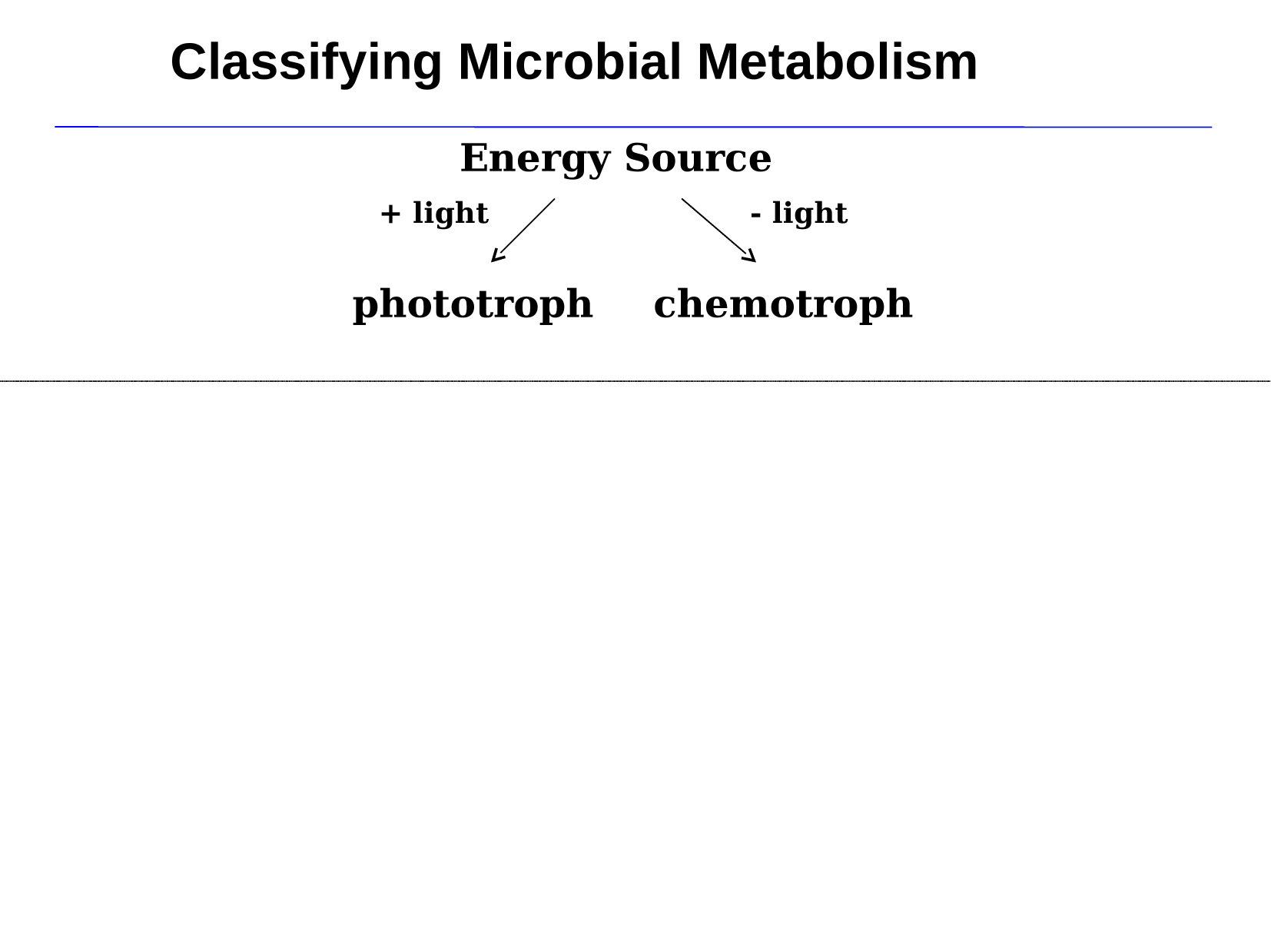
Classifying metabolism
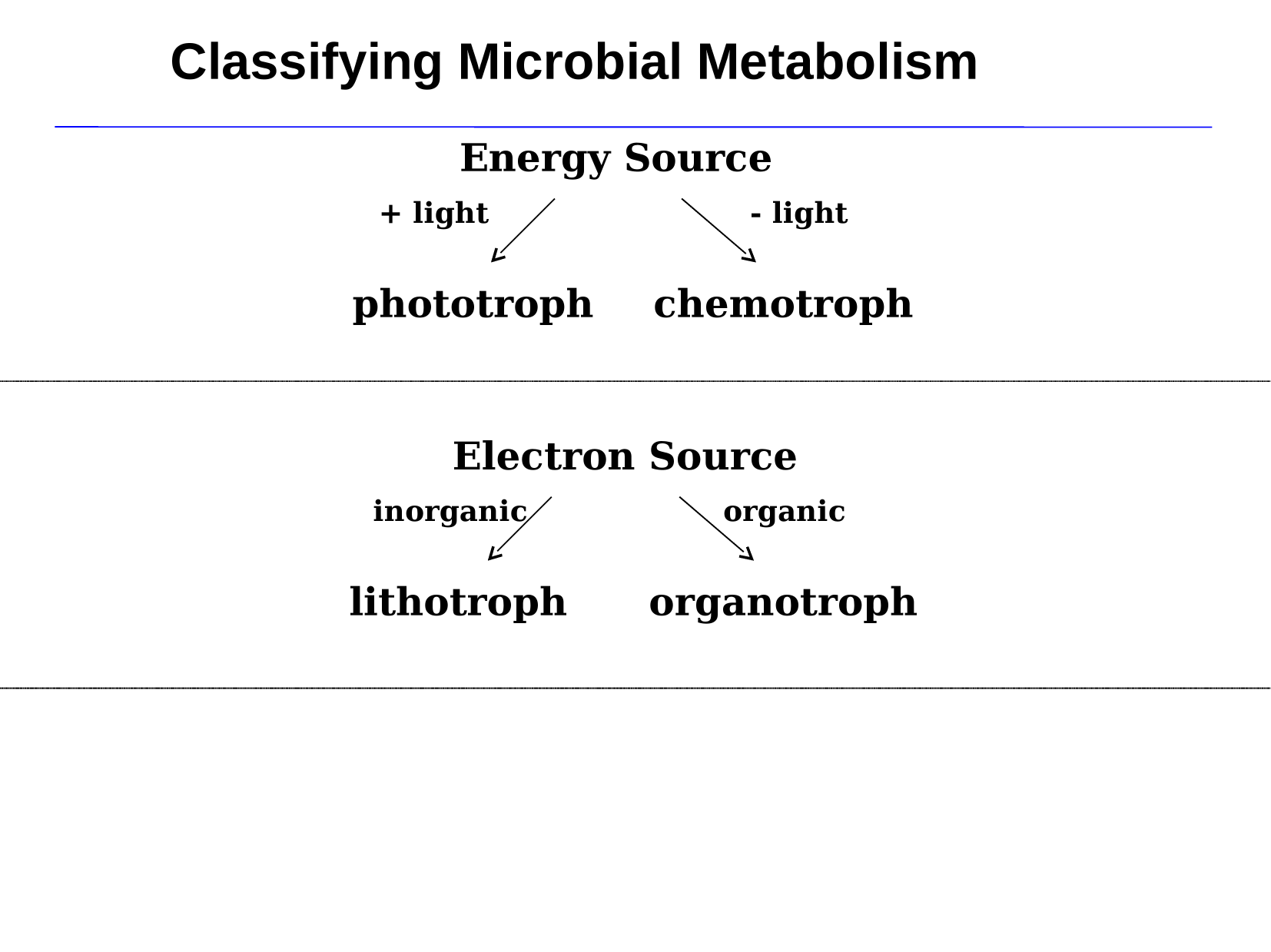
Classifying metabolism
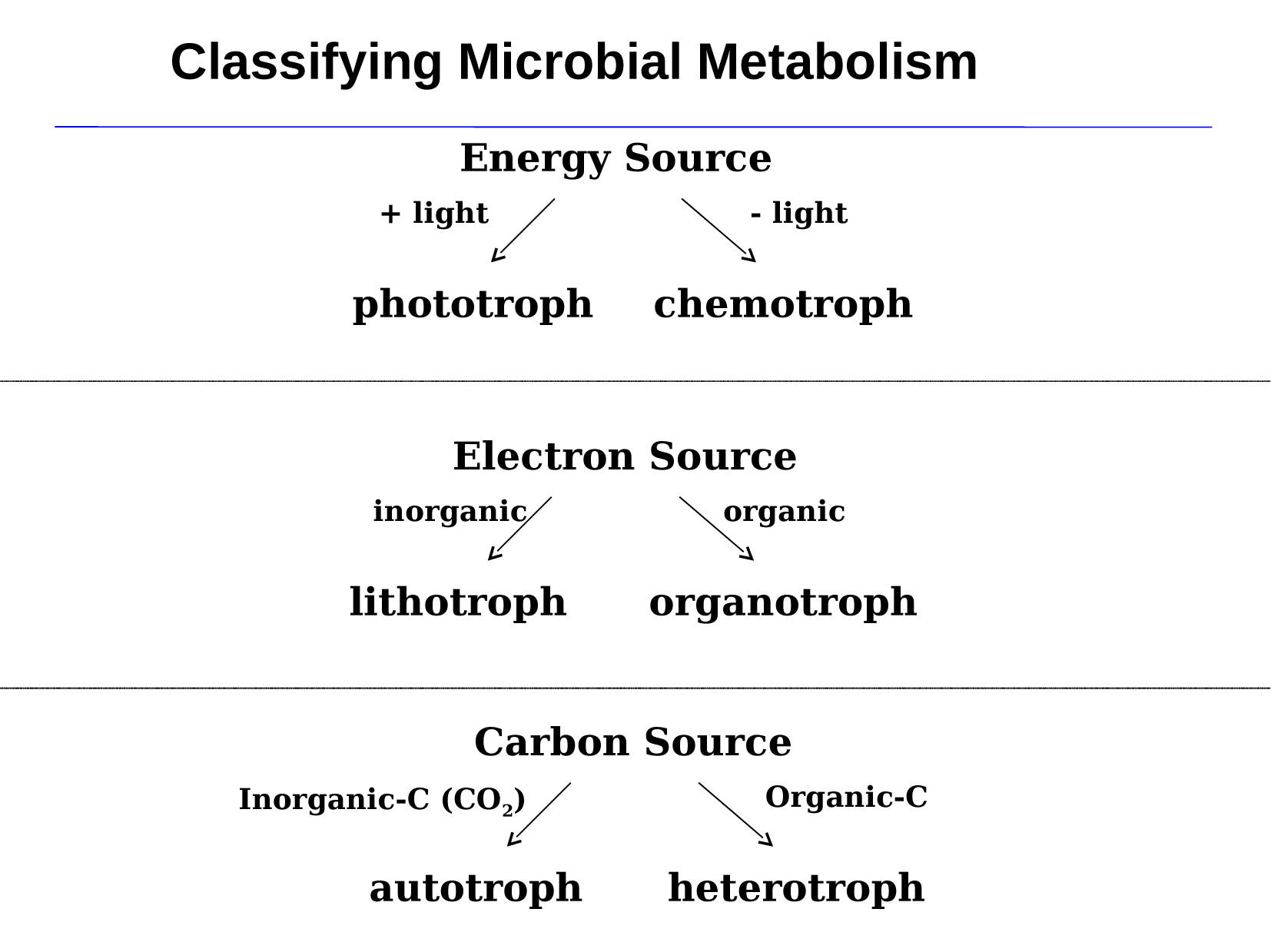
Classifying metabolism
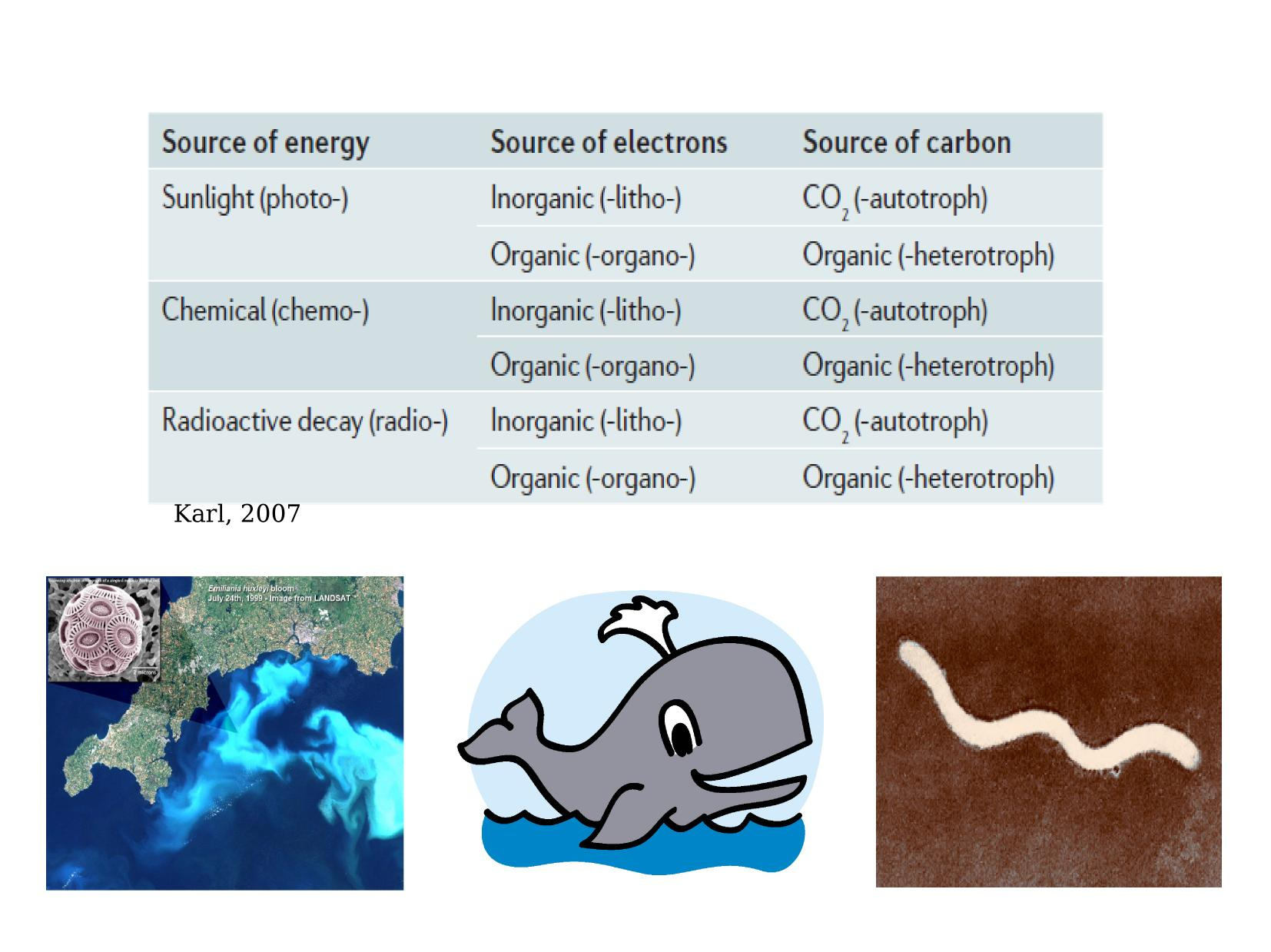
Classifying metabolism

Classifying metabolism
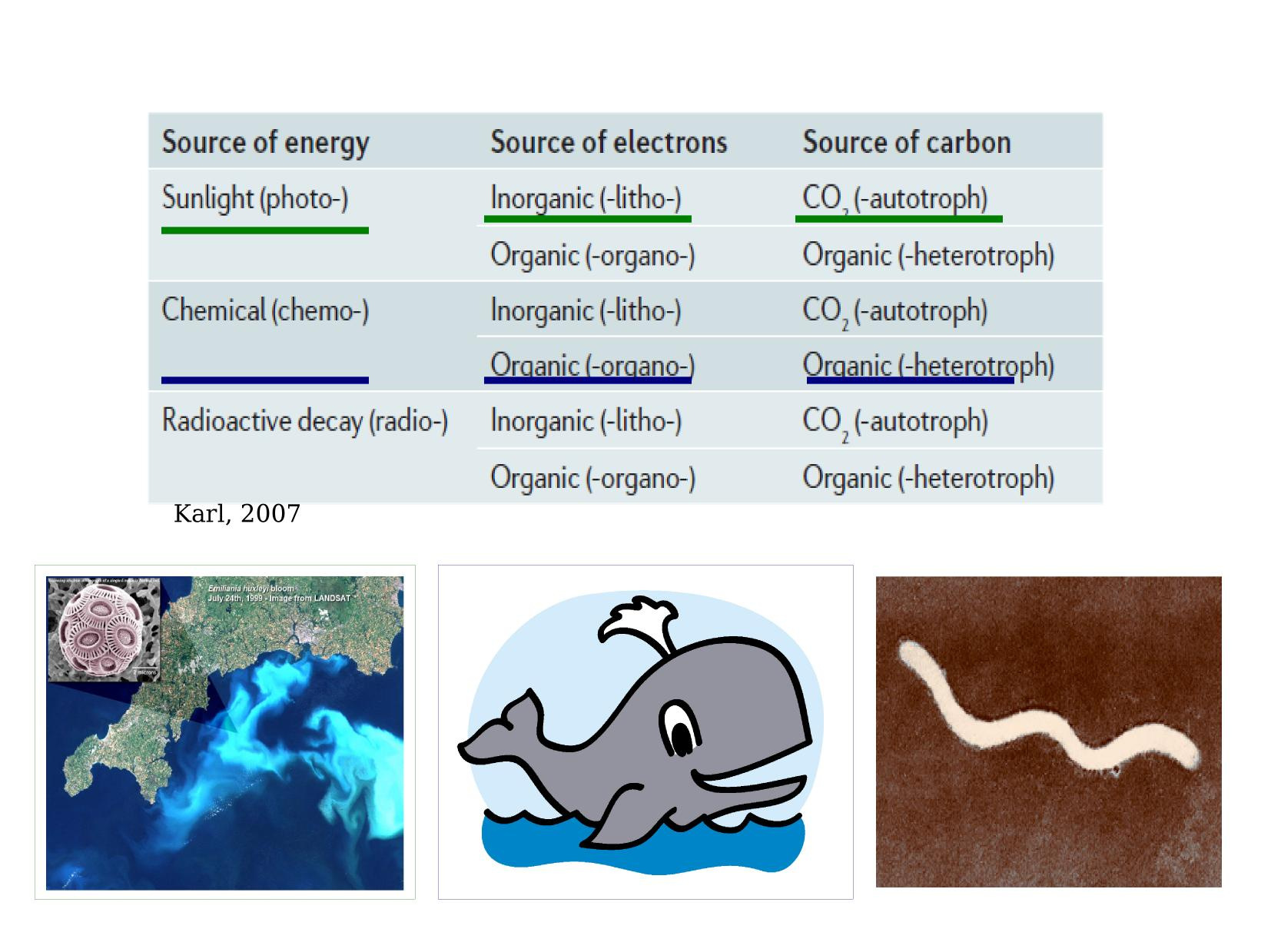
Classifying metabolism
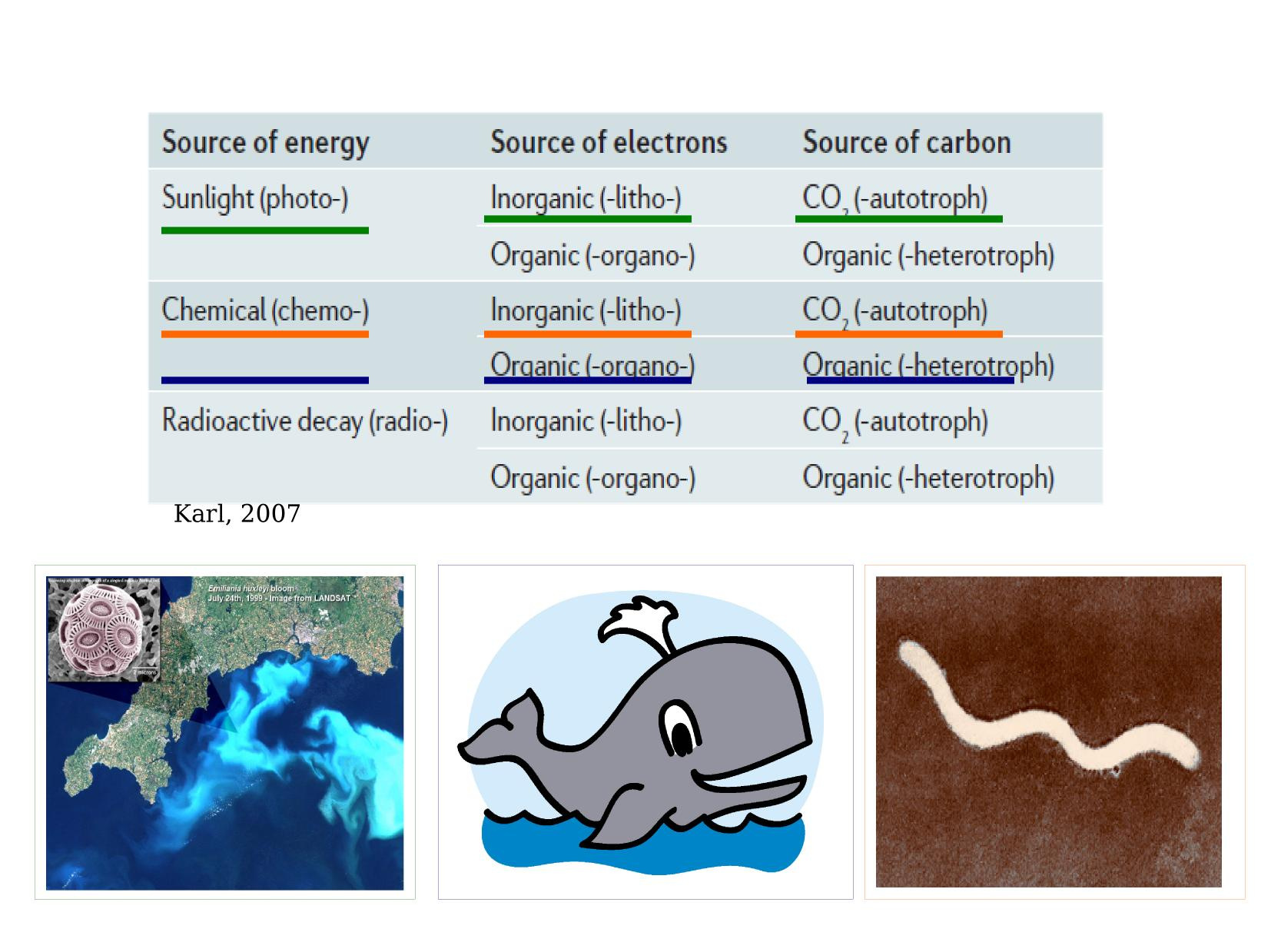
Classifying metabolism




Classifying metabolism
Photo-litho-autotrophs
Chemo-organo-heterotrophs
Classifying metabolism: Oxygen

Diagram: Matthew Kirk

Classifying metabolism: Oxygen
Anaerobic
Aerobic




Classifying metabolism
Oxygenic photo-litho-autotrophs
Anaerobic Chemo-organo-heterotrophs
Anoxygenic photo-litho-autotrophs




Classifying metabolism
Think-pair-share (3 minutes) - Where would you find:
- Aerobic chemolithoautotrophs
- Anaerobic methane oxidizers
Oxygenic photo-litho-autotrophs
Anaerobic Chemo-organo-heterotrophs
Anoxygenic photo-litho-autotrophs




A window back in time
The deeper you go, the more ancient the metabolic pathways
A window back in time
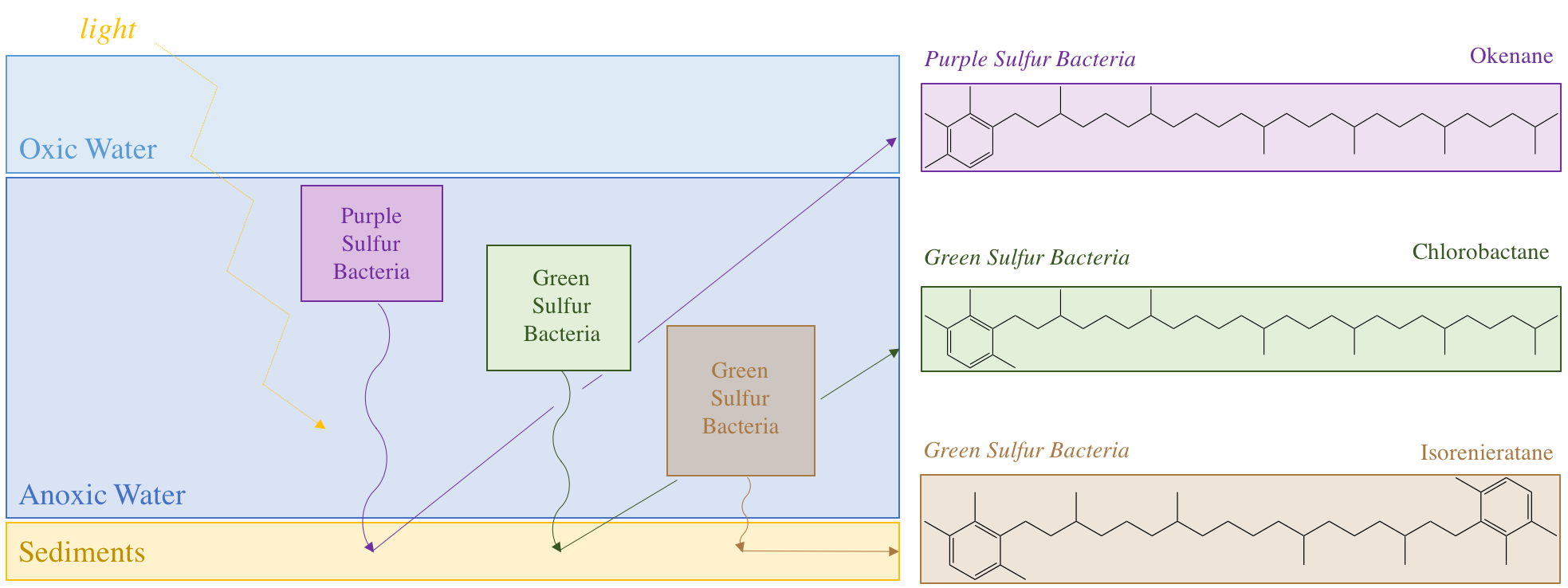
Biomarkers for anoxygenic photolithoautotrophs in ancient sedimentary rocks indicate euxinia, i.e. H2S in the sunlit ocean.
- Since H2S is highly toxic, possible factor in mass extinctions
Diagram: Alatleephillips
- Which microbes catalyze specific bio(geo)chemical processes?
- What are specific proteins / pathways responsible and their properties?

DNA sequencing is now low-cost...

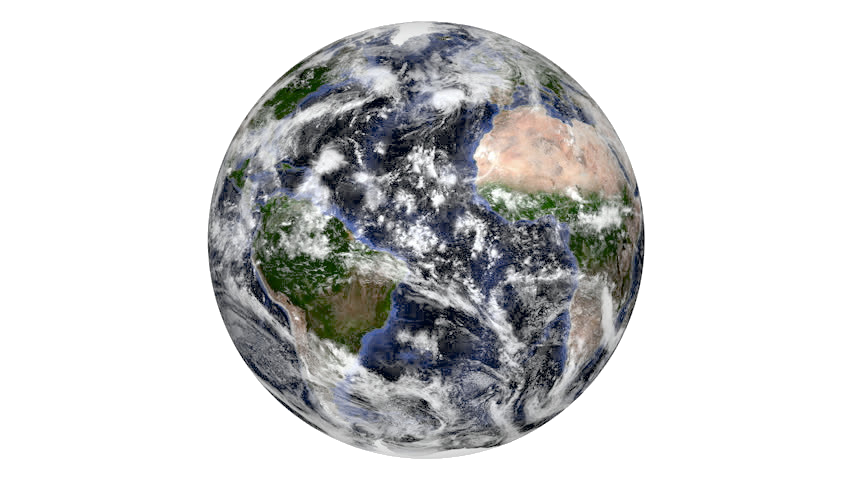
...allowing us to sequence environmental "microbiomes"
Methods for "mapping" microbial communities
-
Metabarcoding uses PCR to measure abundance of microbial life across space / time
- Comprehensive (universal primers)
- Sensitive (sequencing is cheap!)
- Specific ("denoising" algorithms)




Microbe art: @claudia_traboni
Methods for "mapping" microbial communities
- Cultivation still critical for microbial ecology
- Physiology
- Morphology, other traits
- Growing O2-sensitive microbes is pretty easy:
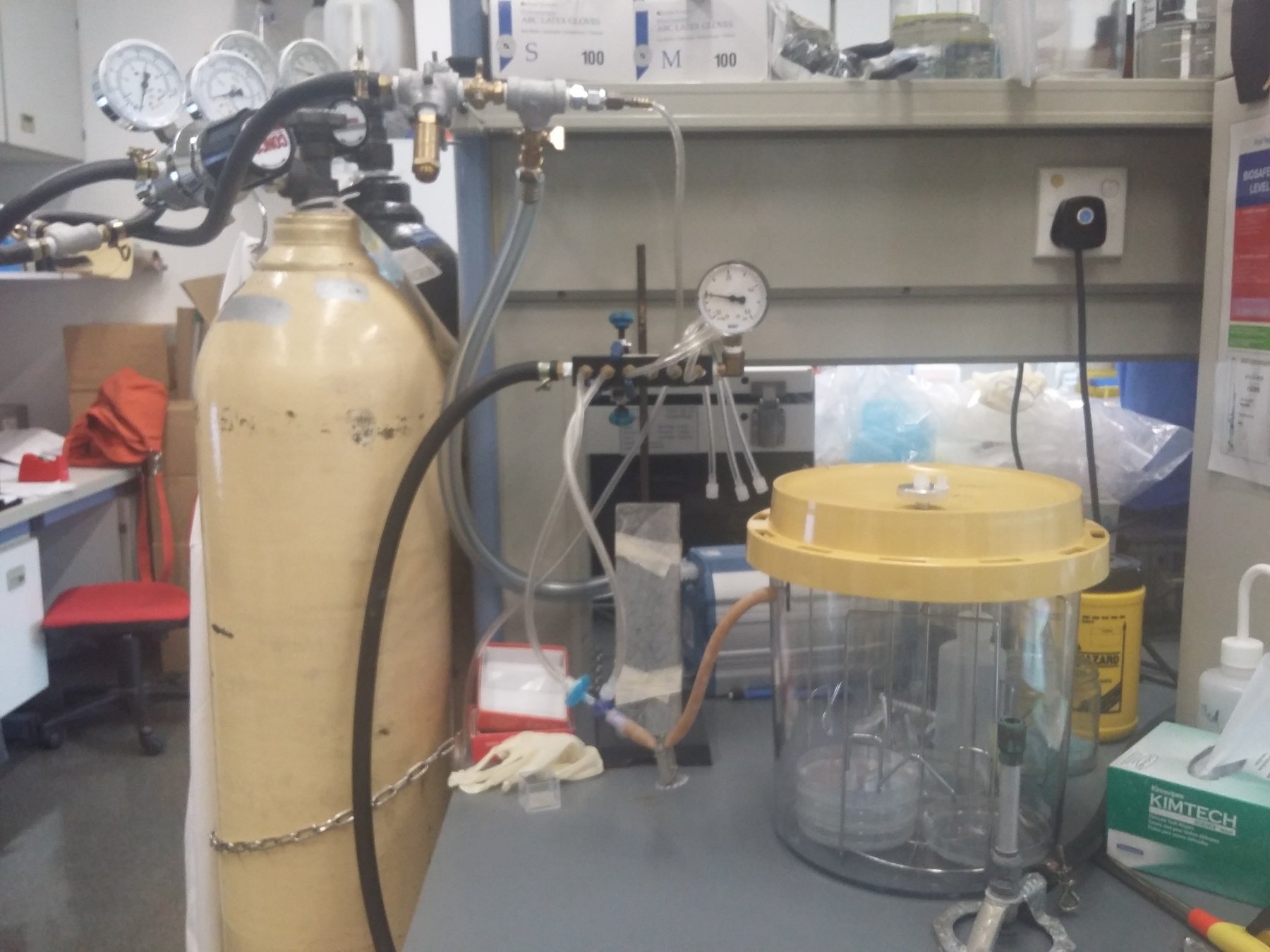
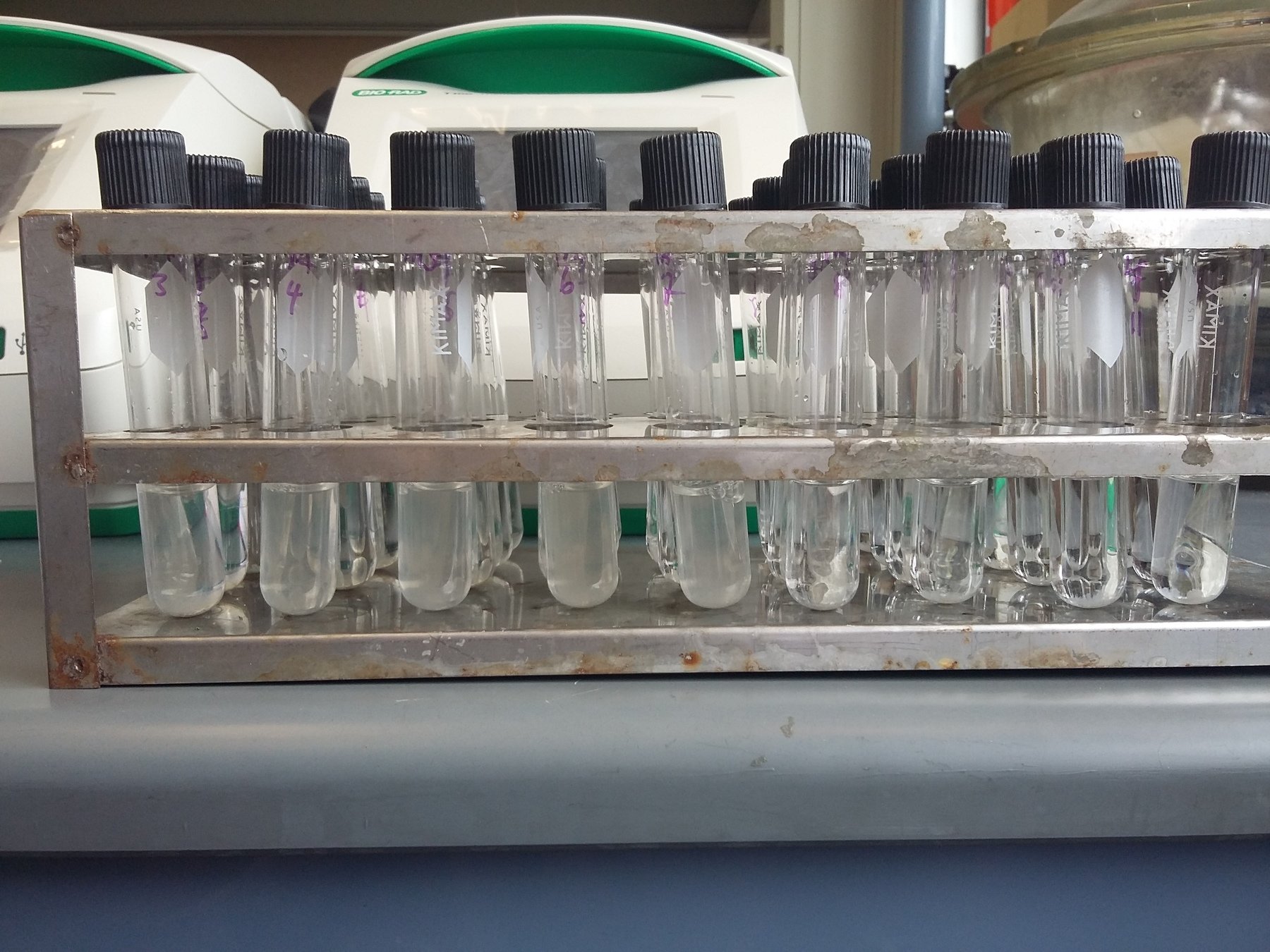
DIY gassing station
Hungate tubes
Methods for "mapping" microbial communities

FISH
SIP

Fluorescence in situ hybridization (FISH)
Methods for "mapping" microbial communities
Techniques for working at the microbial scale


Sebastián & Gasol (2019), 10.1098/rstb.2019.0083 ; McNichol et al (2018) 10.1073/pnas.1804351115 ; Zehr (2015) 10.1126/science.aac9752; Bramucci et al (2021) 10.1038/s43705-021-00079-z

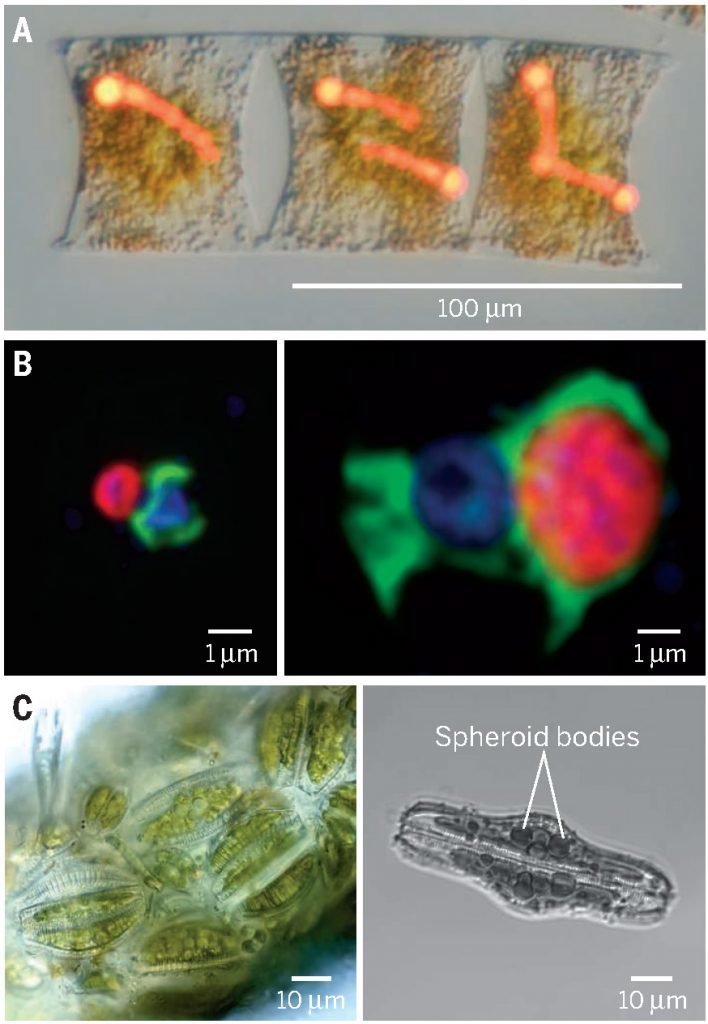

Methods for "mapping" microbial communities
- Taxonomy (CARD/HCR-FISH) / transcription (FISH-TAMB)
- Respiration, cell viability (RSG); Polyphosphate content (DAPI)
Automatic cell-sorting + environmental databases = taxon-specific activity or genetic potential measurements
Many uses for sorted cells:
- Taxon-specific isotope uptake
- Mini-metagenomes with few cells
- Cell isolation for cultivation
Pjevac et al (2019) 10.1111/1462-2920.14739
Multiple sorting axes now possible

Methods for "mapping" microbial communities
Activity
-
Design an experiment to cultivate an organism (2 minutes), presenting in groups of 4+ (5 minutes)
- Present metabolic classification
- Describe electron donors, acceptors
- Other special conditions needed (light, oxygen, etc) & suggest an environmental source





Oxygenic photo-litho-autotrophs
Anaerobic Chemo-organo-heterotrophs
Anoxygenic photo-litho-autotrophs
Review: Learning objectives
• Describe how to construct a Winogradsky column and what each added component contributes to the miniature microbial ecosystem
• Compare and contrast the environmental niches of the following organisms using the 3-part metabolic classification scheme:
A) Oxygenic photolithoautotrophs
B) Purple / green sulfur bacteria (non-oxygenic photolithoautotrophs)
C & D) Aerobic / Anaerobic chemoorganoheterotrophs
• Explain how the metabolism of microbes leads to visible redox zonation across depth
• Explain 2 or more products of microbial metabolism in sediments that have ecosystem- or biosphere-wide impacts (any chemical you like)
• Suggest a strategy for culturing any of the organisms in the above categories (except for aerobic heterotrophs / oxygenic phototrophs) including carbon source, electron donors, and electron acceptors needed, and a possible environmental source (be creative!)
Closing thought
At the very core of Dubos’ scientific vision lay Vinogradskii’s perception that ‘‘countless microbes perform limited, well-defined tasks to recycle organic matter so that it does not accumulate in nature.’’" —Ackert 2007
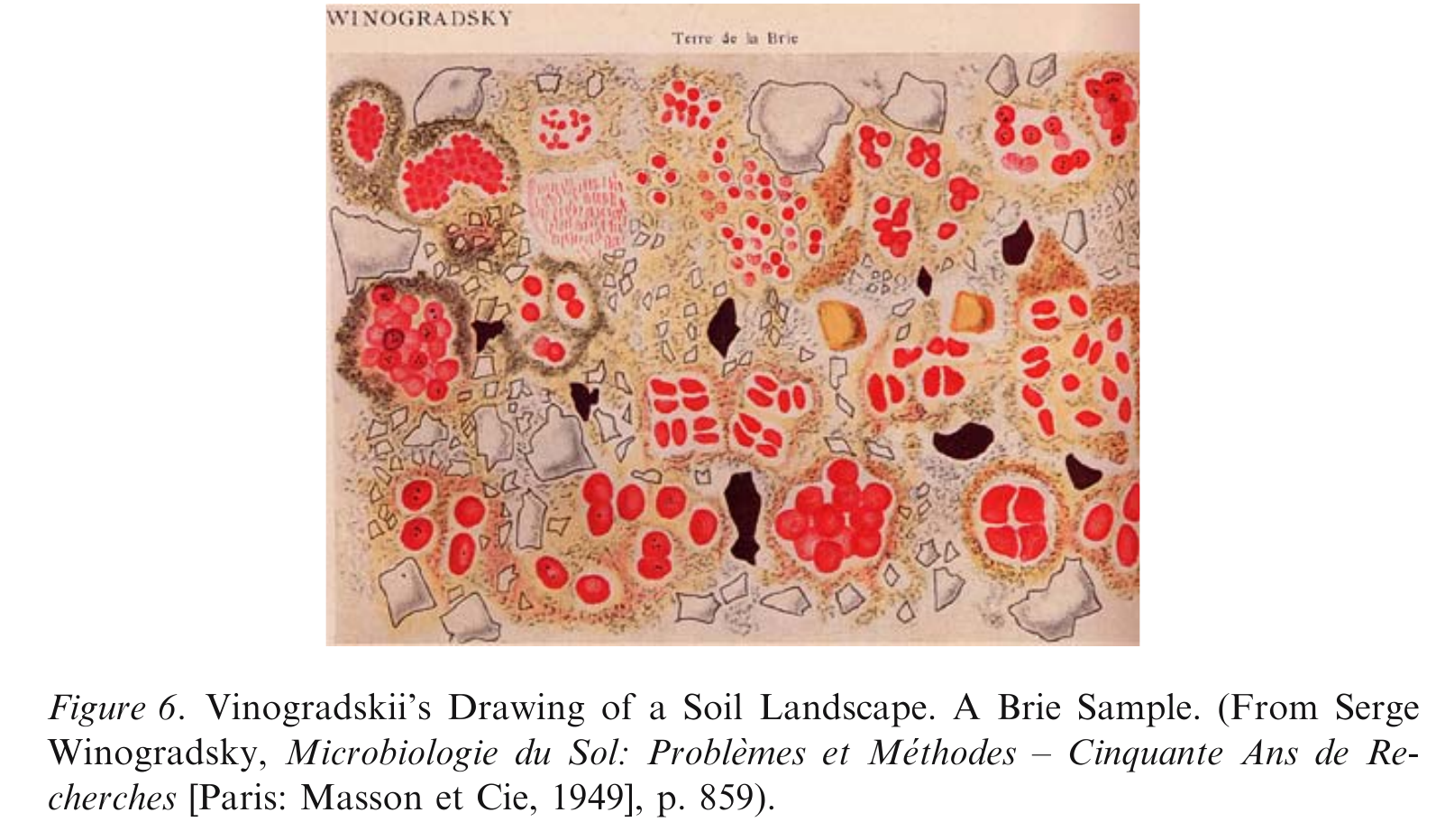
Next time: Active research
Cheap DNA sequencing => insights into evolution, biogeochemistry:

Prokaryotes:
- Novel lineages
- Pangenomes


Eukaryotes:
- Huge unsampled diversity
- Non-coding DNA & "function"
